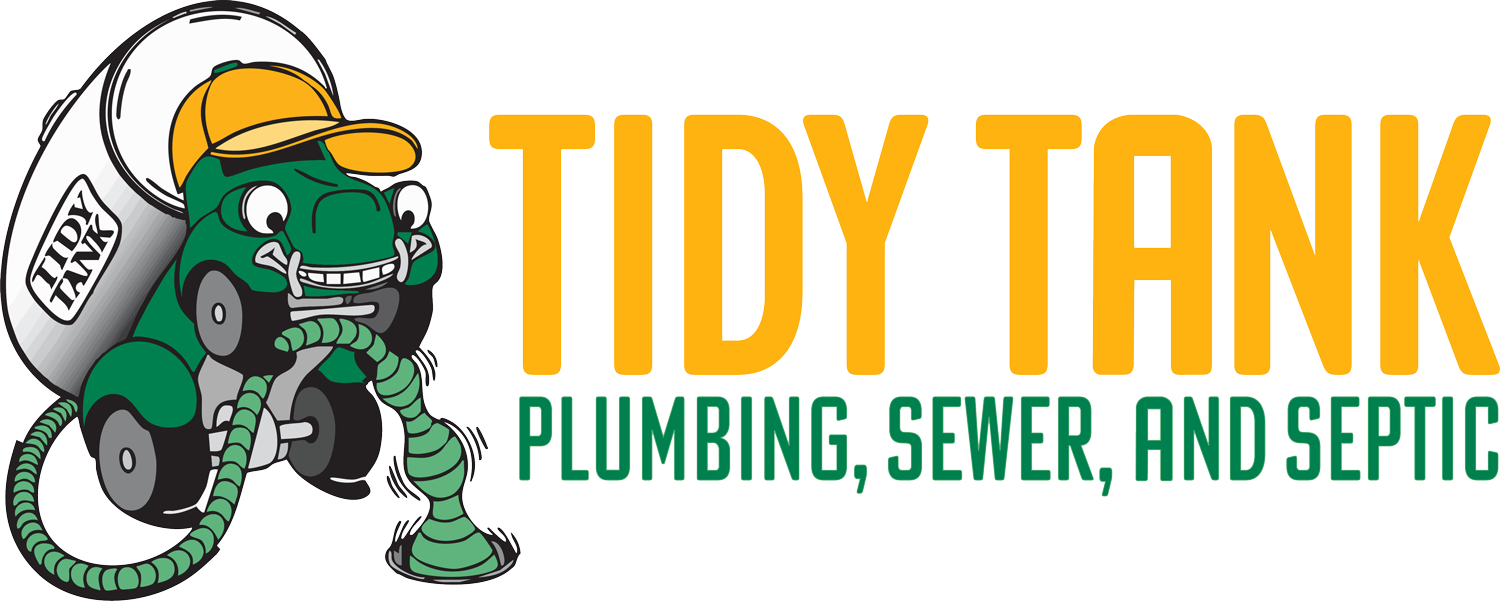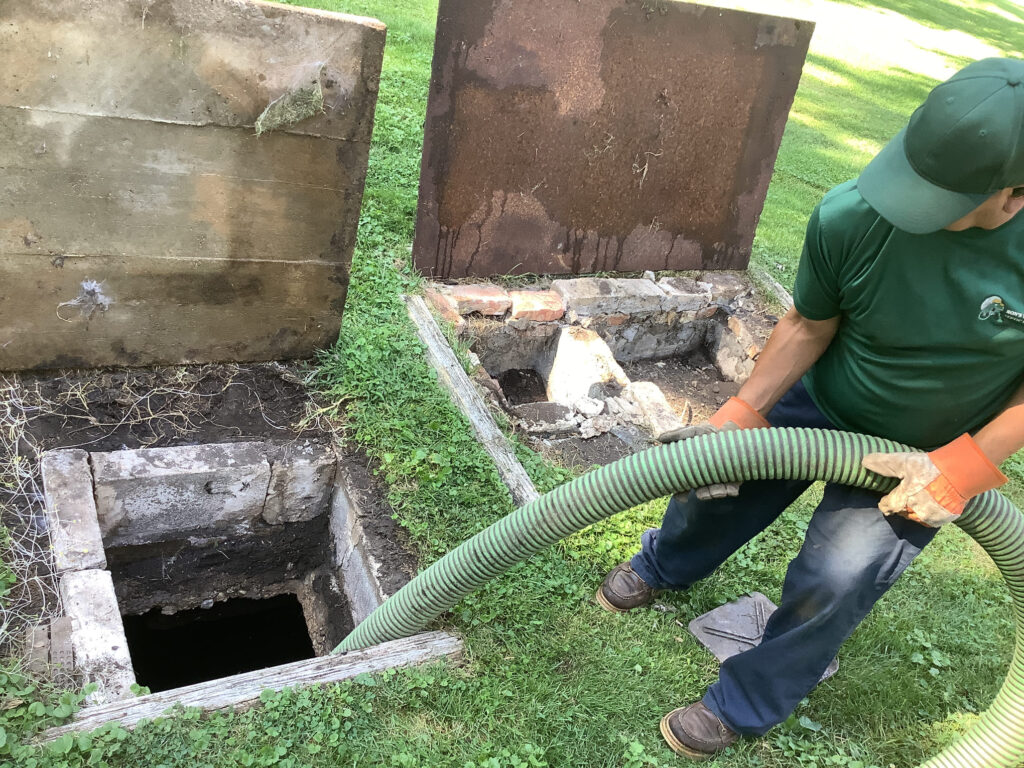Choosing the right septic tank materials is crucial for the longevity and efficiency of your septic system. The most common options are concrete, plastic, and fiberglass, each offering distinct benefits and drawbacks. In this blog, we’ll break down the pros and cons of each septic tank materials to help you make an informed decision when installing or replacing a septic tank.
Choosing the Right Septic Tank Materials
The septic tank materials can affect its durability, maintenance needs, and overall cost. Since the septic system plays a crucial role in managing your household’s wastewater, the right material ensures it functions efficiently for decades. Septic tanks are designed to separate solids from liquids and prevent blockages, so selecting the best tank material will reduce the chances of leaks and failures.
If you’re new to septic systems or looking for maintenance advice, check out our detailed guide on septic tank inspections, which explains why regular upkeep is essential for all types of septic tanks. You can also visit the EPA’s Onsite Wastewater Treatment Systems Manual, which offers a thorough overview of septic system components and guidelines.
The Pros and Cons of Concrete Septic Tank Materials
Concrete septic tanks have been a trusted option for years due to their strength and durability. These tanks are suitable for most homes, particularly larger properties or homes that produce a higher volume of wastewater.
Pros of Concrete Septic Tank Materials
- Durability: Concrete tanks are incredibly strong and can last over 40 years with proper maintenance. They resist corrosion and can handle the pressures of soil and environmental factors.
- Stable and Heavy: The weight of concrete helps it stay in place, even in high water table areas. This reduces the risk of the tank shifting or floating.
- Large Capacity: Concrete septic tanks come in larger sizes, making them ideal for properties with higher water use, such as multi-building homes.
Cons of Concrete Septic Tank Materials
- Higher Cost: Concrete tanks can be more expensive to purchase and install. They require heavy machinery for installation, which increases labor costs.
- Prone to Cracking: Over time, concrete can crack, especially in areas with unstable soil or extreme freeze-thaw cycles. These cracks may lead to leaks, causing system failure.
For tips on maintaining your concrete septic tank or dealing with potential issues, refer to our post on septic tank pumping.
The Advantages of Plastic Septic Tank Materials
Plastic (or polyethylene) septic tanks are becoming more popular due to their lightweight construction and ease of installation. They’re often a good option for homeowners looking for a cost-effective solution.
Pros of Plastic Septic Tanks
- Lightweight and Easy to Install: Plastic septic tanks are lighter than concrete, making them easier to transport and install without the need for heavy machinery. This also reduces installation costs.
- Cost-Effective: Plastic tanks are typically more affordable than concrete or fiberglass, making them a great budget option for homeowners.
- Corrosion-Resistant: Plastic septic tanks won’t corrode like concrete, meaning they are less likely to suffer damage from chemicals or environmental factors.
Cons of Plastic Septic Tanks
- Prone to Damage: While plastic is flexible, it’s also more prone to damage under pressure from the surrounding soil. Care must be taken during installation to avoid cracking or deformation.
- Floating Risk: In areas with high water tables, plastic tanks are more likely to float or shift if not properly anchored, which can cause significant damage to your system.
For more information about plastic septic tanks, visit The Water Environment Federation for additional guidelines and details on materials used in onsite wastewater treatment systems.
The Benefits of Fiberglass Septic Tank Materials
Fiberglass septic tanks offer a middle ground between the durability of concrete and the lightweight convenience of plastic. These tanks are strong, corrosion-resistant, and can last for many years without needing extensive maintenance.
Pros of Fiberglass Septic Tanks
- Lightweight and Durable: Fiberglass septic tanks are lightweight, making them easy to install, but they also offer superior durability compared to plastic tanks. They resist corrosion and can last for decades with minimal maintenance.
- Corrosion-Resistant: Fiberglass won’t rust or corrode, even when exposed to chemicals in wastewater. This makes it a long-lasting and low-maintenance option for homeowners.
- Less Risk of Floating: Fiberglass tanks are designed to resist floating, even in areas with high groundwater levels, making them a safer option for properties with high water tables.
Cons of Fiberglass Septic Tanks
- Higher Cost than Plastic: While more affordable than concrete, fiberglass tanks tend to be more expensive than plastic options. However, their long lifespan and durability may make them worth the extra cost.
- Prone to Cracking: Fiberglass can crack if mishandled during installation. It’s important to work with experienced professionals to avoid damage.
For more advice on how to choose the right material based on your property’s soil and local regulations, explore our guide on septic system regulations and permits.
Which Material Is Best for You?
The best septic tank material depends on your budget, soil conditions, and the size of your property. Here’s a quick recap to help guide your decision:
- Concrete Septic Tanks: Ideal for larger properties in stable soil areas. Durable but more expensive and may crack over time.
- Plastic Septic Tanks: A cost-effective, lightweight option for smaller properties. Easy to install but may float in high water table areas.
- Fiberglass Septic Tanks: A balanced option that offers corrosion resistance and durability. It’s more expensive than plastic but lasts longer and resists damage.
Before making a final decision, consult with a septic professional to ensure you’re choosing the best material for your specific needs. Regular maintenance is key to ensuring your septic system runs smoothly, no matter the material.
Conclusion: Concrete, Plastic, or Fiberglass?
Each septic tank material has its own benefits and challenges. Whether you choose concrete, plastic, or fiberglass, proper installation and regular maintenance are essential to ensuring the longevity of your system. Understanding the pros and cons of each option will help you make the best choice for your home.
If you need expert advice on choosing the right septic tank material, Tidy Tank Plumbing, Sewer, and Septic is here to help. We offer professional installation and maintenance services for all types of septic tanks in McHenry and Lake County, IL.
For more information, visit our full range of services and blog articles.

